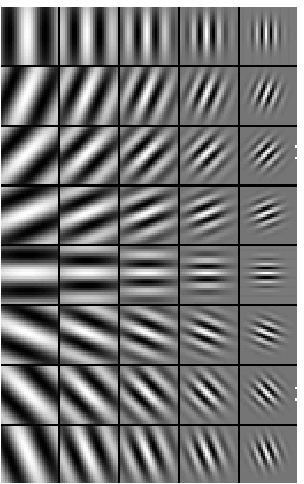


Next: Experimental Results and Discussion
Up: Feature Extraction
Previous: Eigenfeatures
Similar to the system of Lades et al. [5], we apply a wavelet
transform based on the Gabor kernel
 |
(1) |
where
 |
(2) |
All the Gabor wavelets are created from this kernel by dilation and
rotation. The 40 wavelets created from indices
 (size)
and
(size)
and
 (orientation) are shown in figure 4.
These wavelets are convolved with the image, and we keep the value of the
center pixel. This provides us with a feature vector of 80 complex
coefficients, but we only keep the amplitudes for classification.
(orientation) are shown in figure 4.
These wavelets are convolved with the image, and we keep the value of the
center pixel. This provides us with a feature vector of 80 complex
coefficients, but we only keep the amplitudes for classification.
Figure 4:
The Gabor wavelets.
 |
Erik Hjelmås
1999-01-21